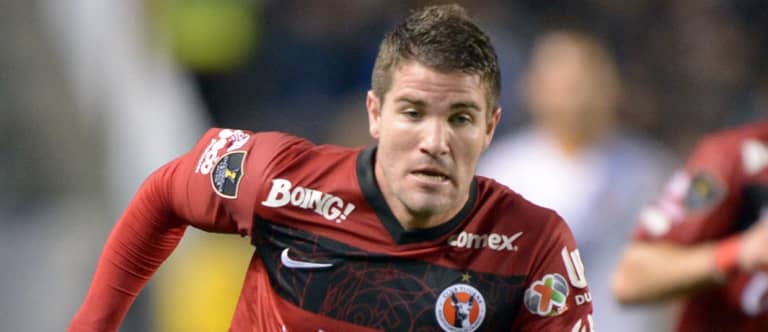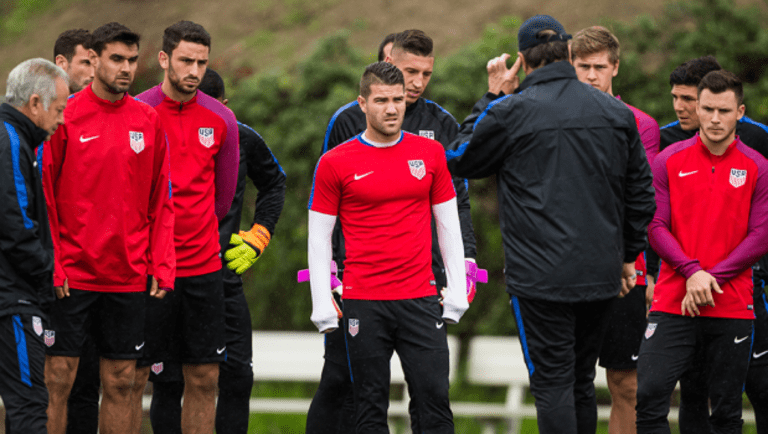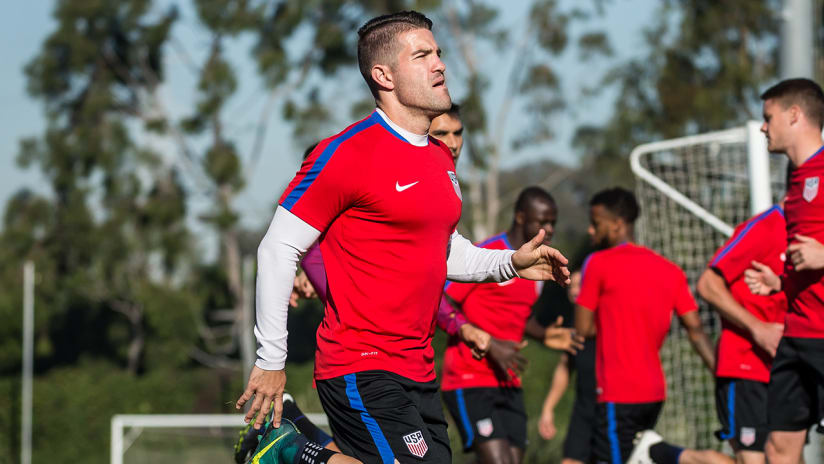REDONDO BEACH, Calif. – Though he proudly wears the colors of the United States, Greg Garza has spent only a scant few moments of his soccer career on US soil.
A true wanderer in the modern global game, Garza left his home in Dallas, Texas as a child, came of age in Brazil, turned pro in Portugal and made his name as a professional in Mexico. It's a situation he's more than happy to change this year, as he joins Atlanta United FC for what will be the debut MLS campaign for both club and player.
“I've lived more than half of my life overseas,” said Garza in a recent one-on-one conversation with MLSsoccer.com during the US national team's January camp in Southern California.
“I have tattoos all over my body just kind of telling my story – one of them is a gypsy woman; I kind of call myself a gypsy. My wife and I really don't have a home. You have investments and homes here and there, properties and stuff like that, but you never have a place you can really call home, and that's the life of a soccer player. You get used to it.”

Garza's is a tale that might not be allowed to unfold today, as FIFA has cracked down on enforcement of its Article 19 rule to prevent youth players from crossing borders in search of soccer opportunities. His talent was spotted early by a retired Brazilian great named Teodoro Santana, a former teammate of Pele who convinced Garza's family to let him journey south to Sao Paulo FC's academy for a trial stint at the tender age of 12. Somewhat amazingly, Garza was accepted into an age cohort headlined by Oscar, the Chelsea star who recently jetted off on a big-money move to China.
“Those were the guys that actually taught me how to play. In Portuguese we call it 'ginga,' that's the moves that they do. I think I still carry it with me today, I love to dance on the ball and be technical and juggle and all that stuff,” recalled Garza.
“I was probably more worried about playing my GameBoy at the time. But these guys were playing to put food on the table for their families, and they're 12 years old … seeing guys coming down from the favelas to training and then going back up right afterwards is pretty amazing and really taught me how to grow up fast.”
That set the young American on a winding path that led to US Soccer's Under-17 Residency program in Bradenton, on to vaunted Portuguese power Sporting CP, then Estoril Praia, and eventually to the then-new experiment taking root on the US-Mexico border at Club Tijuana. Along the way he met and married his wife – a Portuguese-Brazilian whose father and brother were and are themselves pro players, too – at the tender age of 18.
Garza became a trusted regular on a Liga MX-winning side, earned a flurry of USMNT call-ups and was poised to move on to an arguably even bigger club via a 2015 loan move to Atlas. But that's when his body began to break down.
“The main thing was hip impingement on both sides,” he explained. “I had absolutely no rotation in my hip joints, my hip joints were completely shot and I had bone spurs on both sides. Just bone with bone rubbing against each other.”
A genetic predisposition exacerbated by years of constant training had effectively ground Garza's hips into a pulp, leaving him with golf-ball-sized bone shards floating in his muscle tissue. He'd tried to stave off surgery with PRP (platelet-rich plasma) injections and steroidal injections, but began to pick up groin and hernia problems as adjacent muscles attempted to compensate.
“Even going to the restroom was a bit difficult,” he recalled. “At the time my son was two and I was having trouble just playing with him. It was taking away from my personal life.”
Finally, a dire warning from his doctors convinced him to go under the knife for a series of major surgeries, requiring a year-plus recovery process before he could even run again.
“If I wouldn't have gone through with the surgery, I probably would've been retiring at 26, 27. And I'm 25 years old,” he said. “Both hips and my entire pelvis. Three surgeries, three epidurals seven months after that. So it was a long 11 months and then probably another five, six months to get back into it.
“So it was tough – a lot of pain and pretty excruciating surgery,” he added. “It was a process of patience, but something that was needed. If not, then I probably would've been saying goodbye to what I love a lot sooner than I really want to.”
When he finally returned to training with Tijuana last summer, he found himself on the outside looking in as manager Miguel “Piojo” Herrera had his lineup largely set. Then, as if he didn't have enough of a mountain to climb, Garza was dismayed to see Liga MX enact a new set of regulations that retroactively deemed him and other US-born players like him foreigners – even though they hold full Mexican citizenship.
“Having Mexican heritage, Mexican blood, but not allowing me to play as a Mexican because I had 'naturalized' or became a Mexican citizen after I was 18 years old,” Garza explained. “You do so much work within those 11 months to get back completely healthy and then not having the opportunity on the field – and then also being a 'foreigner' now, it's tough to grasp.”
Nominally intended to open up opportunities for homegrown talent, the new rules have drawn criticism for doing the opposite, with Mexican teams now able to field as many as 10 foreign players.
“If they would've had this rule five years ago, I probably wouldn't have been in Mexico,” Garza said. “The [Xolos] Under-20 coach [said], 'What do I tell these kids? They do everything they can to get up to the first team and it's probably easier for the first team to buy some other guy from another country. You can't give them that confidence that they might have a chance to make it.'”
Garza and his growing family – his wife is currently pregnant with their second child – felt it was time for a change. So when Carlos Bocanegra and Gerardo “Tata” Martino came calling on behalf of Atlanta United, perhaps the most ambitious expansion club in MLS history, the pitch was well-received. A long-awaited call back to the USMNT fold for this month's training camp provided the icing on the cake.
“I needed change, I needed to move, I needed difference, and my family felt that as well – we needed a new journey to take on, a new task to take on and Atlanta showed the perfect opportunities, the perfect project,” said Garza. “I think they're a step ahead of what any expansion team has done in the past.”

Atlanta have Garza on their books for a year-long loan with an option to buy. He carries big ambitions to his new city, both off the field and on it.
“I think Carlos really knows what he's doing, and who better could they bring than someone with tons of coaching talent like Tata?” he said. “If in the end I can stay a few more years in Atlanta and everything runs well, that'll definitely be the plan … If you can establish yourself in one team for a while, that's a sign you're doing well.”
With Bruce Arena having declared a wide-open competition for the USMNT's fullback spots, 2017 could mark Garza's resurgence for both club and country.
“Its definitely a spot to fight for,” he said of the Yanks' left back role. “There's definitely big work for all of us. I think the main thing for us is just to create this team bond before anything else. The past two years have been very tough – even not being there, watching from afar to see how much pressure has come upon this group. I'm happy to be back.
“It's a new start for all of us.”













